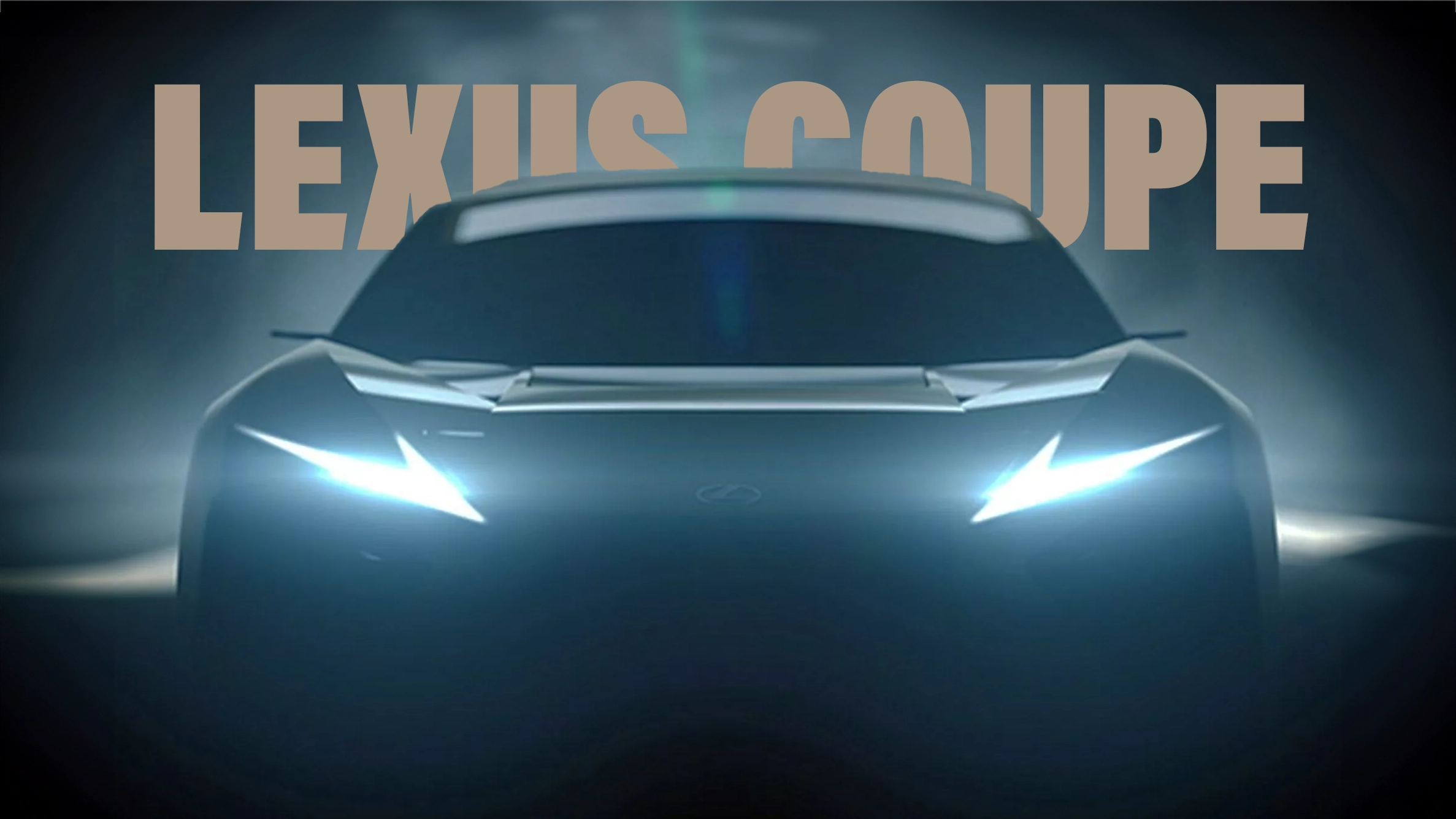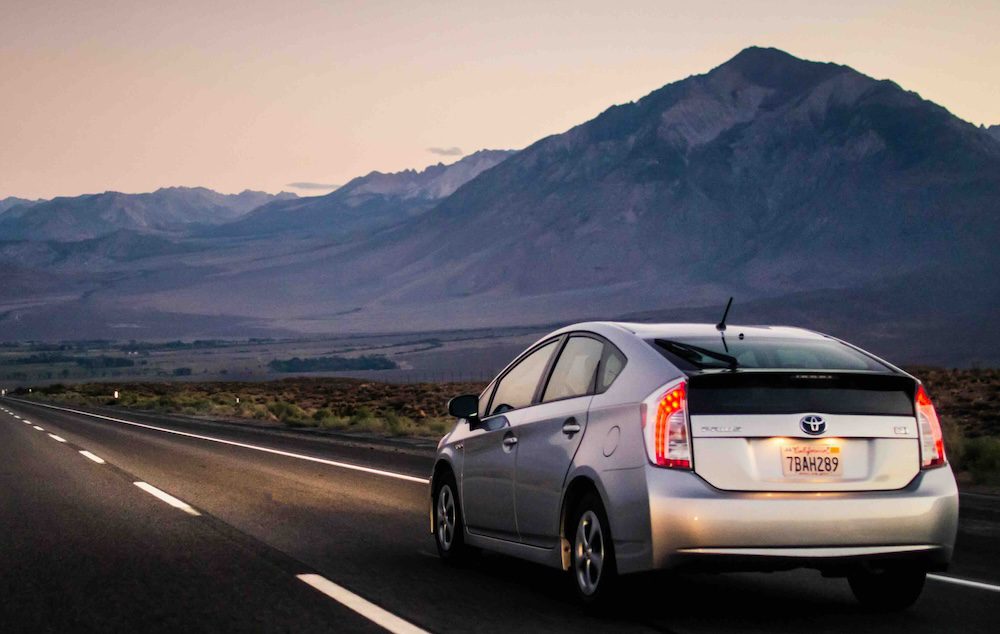Amen!LS? LX? LC? RC? IS? GX deserves the 409hp tune, as well as the V35A + hybrid, not T24A. LX 700h should be the base option with an optional V8 + hybrid. Same for LS. The upper end of the market is where I'm most worried, and GA-K with 4cyl ICE and HEV or PHEV won't cut it.
You are using an out of date browser. It may not display this or other websites correctly.
You should upgrade or use an alternative browser.
You should upgrade or use an alternative browser.
Official Lexus Future Product & Powertrain Megathread
- Thread starter ssun30
- Start date
It would be more helpful to post the original Japanese text instead of machine translations.Best Car March 10, 2024 issue [Magazine]
"Engine Return Theory" - Morizo
Not the best translation, but talks more about Toyota not moving to full electric vehicles.
dylanfoos
Follower
- Messages
- 289
- Reactions
- 429
So according to that, Toyota is working on a 2.2L 4 cylinder version of the G16E? Am I understanding that correctly? I kinda struggle seeing where that would be used. The MR2 makes the most sense, but aside from that, I dunno. The rumored 86 sedan and wagon? GR Camry? ES-F? RX-F? None of those seem to be a justifiable business case for a whole new engine, especially with the T24, S20, and hybrid as options.
I think if Toyota were to add cylinders to the G16, they should add three more and have a TT I6 to use in the Supra, RC+LC, IS-F, and LS.
I think if Toyota were to add cylinders to the G16, they should add three more and have a TT I6 to use in the Supra, RC+LC, IS-F, and LS.
Kelvin2020
Admirer
- Messages
- 859
- Reactions
- 2,000
There have been too many rumors, I can't keep up with it😮💨
F1 Silver Arrows
Expert
- Messages
- 2,573
- Reactions
- 4,180
So according to that, Toyota is working on a 2.2L 4 cylinder version of the G16E? Am I understanding that correctly? I kinda struggle seeing where that would be used. The MR2 makes the most sense, but aside from that, I dunno. The rumored 86 sedan and wagon? GR Camry? ES-F? RX-F? None of those seem to be a justifiable business case for a whole new engine, especially with the T24, S20, and hybrid as options.
I think if Toyota were to add cylinders to the G16, they should add three more and have a TT I6 to use in the Supra, RC+LC, IS-F, and LS.
That's what I want. 😫
And/or a 4 cylinder Supra?GR Celica GT4?
Last edited:
One of the earliest BestCar rumors on the GR GT3 (right after Tokyo Auto Salon) was that the racing engine will actually be a 4-cylinder. Maybe the old 5.4L will live on for a couple of years, but the TTV8 was not supposed in the race car because it's too heavy and way oversized for GT3. The G16E-GTS already makes over 500PS with factory internals, making a 600PS+ 4-cylinder version is trivial.
Toyota's most successful racing engine in history was the 3S-GTE and 503E derived from it. 850PS from a 2.1L I4. Won almost every category it raced in. Having a really small, light, durable, easy to repair I4 is a big advantage in motorsport. A "G22-GTS" will be 2157cc which is almost identical to the 2142cc 503E.
So I think the LFR and GR GT might actually be twin models with the former being a 1000PS V8TT PHEV and the latter being a 500PS I4 ICEV but much lighter and suitable for racing.
Toyota's most successful racing engine in history was the 3S-GTE and 503E derived from it. 850PS from a 2.1L I4. Won almost every category it raced in. Having a really small, light, durable, easy to repair I4 is a big advantage in motorsport. A "G22-GTS" will be 2157cc which is almost identical to the 2142cc 503E.
So I think the LFR and GR GT might actually be twin models with the former being a 1000PS V8TT PHEV and the latter being a 500PS I4 ICEV but much lighter and suitable for racing.
Last edited:
Kelvin2020
Admirer
- Messages
- 859
- Reactions
- 2,000

Lexus May Launch A New Coupe To Replace Both The RC And LC | Carscoops
The new Lexus coupe could be offered with Toyota's new 3.4-liter twin-turbocharged V6 found in the Tundra and the latest GX

Toyota To Take Control Of Battery Joint Venture From Panasonic | Carscoops
Primearth EV Energy will start producing batteries for hybrids, PHEVs, and EVs
Toyota’s joint venture battery company with Panasonic will become a wholly owned subsidiary of the Japanese automaker later this month.
The company, Primearth EV Energy Co., Ltd (PEVE), is currently 51% owned by Toyota and 49% owned by Panasonic. It mass produces batteries for hybrid electric vehicles but plans to also begin producing batteries for BEVs and PHEVs and play an important role in Toyota’s growing electrification plans.
Toyota says that “more competitive batteries will enhance the appeal of Toyota’s electric vehicle offerings and contribute to achieving carbon neutrality through a multi-pathway approach.”
Primearth EV Energy was formed as Panasonic EV Energy Co in December 1996 with Toyota holding a 40% stake and Panasonic having the remaining 60% stake. The company was renamed Primearth EV Energy in June 2010 and at the time was 80.5% owned by Toyota. It currently employs approximately 4,700 people.
The car manufacturer notes that the acquisition of PEVE will allow it to flexibly respond to growing battery demand and boost its competitiveness.
internalaudit
Expert
- Messages
- 1,227
- Reactions
- 1,180
Yep, battery is key differentiator, in the EV landscape. Probably doesn't want JV to supply Tesla's Asian manufacturing either lol.
Probably why Honda quit the JV with GM.
Probably why Honda quit the JV with GM.
Toyota’s plug-in hybrids emit four times more CO2 than company claims
Millions of well-meaning Toyota plug-in hybrid owners will be outraged to learn they’ve been burning through four times more petrol and producing four times more emissions than they were led to believe by the world’s largest automaker.
New data released by the European Union Environment Agency shows car makers are substantially overestimating the efficiency of their vehicles for petrol, diesel and plug-in hybrid models.
The study, which uses real-world data on over half-a-million vehicles, found that car companies are underestimating CO2 emissions per kilometre driven by 19% for petrol vehicles and 15% for diesel cars.
However, it is hybrids where the WLTP (World Harmonised Light vehicle Test Procedure) figures, which are used by car companies for official specifications, are staggeringly out of sync with the actual real-world data collected by the European Union.
While the average WLTP CO2 emissions figure across 123,740 hybrids sold in the EU was just 39.59 g/km of CO2, the actual real-world average for those vehicles was 139.39 g/km. An enormous gap of around 100g/km with the real-world figure 3.5 times higher than the WLTP figure.
EU mandatory real-world vehicle emission data reporting shines light on false claims
Many may be surprised to learn that despite enormous amounts of real-world data collected by vehicle makers on fuel efficiency, it only became mandatory for carmakers to report real-world data in the European Union in 2021.
In most other countries around the world, including Australia, it’s still not mandatory at all.
“Pursuant to Article 12 of Regulation (EU) 2019/631, the Commission is required to collect, from 2021, data on the real-world fuel or energy consumption of passenger cars and light commercial vehicles that are recorded by on-board fuel and/or energy consumption monitoring devices as provided for in Article 4a of Commission Regulation (EU) 2017/1151,” states the EU regulation.
This is the first time the EU has released the data since it began mandatory collection from car makers in 2021, finally shining a light on the enormous discrepancies in efficiency and emissions intensity of virtually all vehicles.
“The following tables and graphs summarise and illustrate the first results of this monitoring exercise, based on an analysis of the data reported by vehicle manufacturers in 2022 as read-out from new vehicles first registered in 2021,” it says.
“They show average laboratory and real-world CO2 emissions and fuel consumption of those vehicles, along with the calculated gap between the average laboratory [WLTP] and real-world values.”
The agency has displayed the data per manufacturer, fuel type and for petrol, diesel and plug-in hybrid vehicles separately.
Toyota’s plug-in hybrids produce four times the claimed emissions
While the average plug-in hybrid emits 3.5 times more than WLTP figures suggest, Toyota’s flagship “green” plug-in hybrids are even worse emitting over four times more CO2 than the company’s official figures claim.
The average WLTP figures on Toyota’s plug-in vehicles is just 22 g/km however the EU’s real-world data shows that the true figure is much closer to 93 g/km. This essentially means that Toyota’s true plug-in hybrid emissions are actually much closer to its average petrol car (127.5 g/km) than the company’s official plug-in hybrid figures.
Hybrid owners paying much more than they bargained for
Emissions aside, many plug-in hybrid owners are also paying much more to drive their vehicles than they are being led to believe by car makers.
Looking at the fuel consumption gap between the EU’s real-world data and carmakers WLTP claimed efficiency, plug-in hybrids are on average using an additional 4.24 litres of petrol per 100km.
Based the current petrol price in Australia of $2.23, that’s an extra $9.46 per 100 km that plug-in hybrid owners are paying in fuel costs than carmakers WLTP figures suggest.
The Australian Bureau of Statistics says passenger vehicles in Australia drive around 11,100 km per year. Based on the additional $9.46 per 100 km, that’s an extra $1050 per year that plug-in hybrid owners in Australia are paying each year, than they would be expecting based on carmakers WLTP figures.
There are hundreds-of-thousands of plug-in hybrids on Australia’s roads, many of which are doing high milage as ride-share vehicles, however the EU real-world data shows that these vehicles aren’t really much different to regular petrol cars when it comes to fuel efficiency and vehicle emissions.
Fossil car companies like Toyota use terms like “electrified” to market their plug-in hybrid vehicles, effectively manipulating and confusing consumers by associating petrol burning plug-in hybrids with real electric vehicles.
Well-meaning consumers are being mislead by these claims and many governments even include plug-in hybrids in electric vehicle policies based on the misleading WLTP figures.
The new real-world data from the EU Environment Agency should be a wakeup call to governments to remove all incentives for plug-in hybrids and should be a trigger for plug-in hybrid owners around the world to launch class action cases against companies who’ve engaged in misleading consumers.

Toyota's plug-in hybrids emit four times more CO2 than company claims
New real-world data from the EU shows plug-in hybrid vehicle emissions are actually much closer to the average petrol car than car companies claim.
Is this a puff piece for evs or are drivers really not able to use a product correctly thereby making evs or ice only/hev cars the only path forward?

Are electric vehicles definitely better for the climate than gas-powered cars?
Yes: although electric cars' batteries make them more carbon-intensive to manufacture than gas cars, they more than make up for it by driving much cleaner under nearly any conditions.
Last edited:
mikeavelli
Moderator
- Messages
- 7,507
- Reactions
- 16,676
nah honda throwing darts on the wall teaming up with sony, gm and now nissanYep, battery is key differentiator, in the EV landscape. Probably doesn't want JV to supply Tesla's Asian manufacturing either lol.
Probably why Honda quit the JV with GM.
h
I don't understand what the hell does Honda even want to do, their plans are all over the place. Not saying some other brands aren't also running around like headless chickens, but Honda might be one of the worst offenders in this regard.nah honda throwing darts on the wall teaming up with sony, gm and now nissan
h
I call BS on these articles, maybe the PHEVs from some other brands that run out of electricity way too easily and way too often might be the ones that emit significantly more CO2 than advertised (mainly the PHEVs from the German brands), but Toyota's PHEVs have been pretty good at maintaining a decent amount of charge in the battery most of the time driving on the street and keeping low load on the engine.
Toyota's plug-in hybrids emit four times more CO2 than company claims
New real-world data from the EU shows plug-in hybrid vehicle emissions are actually much closer to the average petrol car than car companies claim.thedriven.io
Is this a puff piece for evs or are drivers really not able to use a product correctly thereby making evs or ice only/hev cars the only path forward?

Are electric vehicles definitely better for the climate than gas-powered cars?
Yes: although electric cars' batteries make them more carbon-intensive to manufacture than gas cars, they more than make up for it by driving much cleaner under nearly any conditions.climate.mit.edu
Why does the author single out Toyota PHEV cars? Do no other automakers (BMW, Mercedes-Benz come to mind) sell PHEVs in Australia? Or do those brands magically better match their published WLTP fuel consumption ratings?
Toyota's plug-in hybrids emit four times more CO2 than company claims
New real-world data from the EU shows plug-in hybrid vehicle emissions are actually much closer to the average petrol car than car companies claim.thedriven.io
And if the WLTP protocol does not produce fuel consumption ratings that closely match real-world figures, why blame the automakers? The automakers have been mandated to use the WLTP test and when all automakers follow a common standard, only then can true apples-to-apples comparisons be made.
If the WLTP protocol is not suitable, what are governments and their regulatory bodies doing about it? The American EPA was able, some years ago, to revise its fuel consumption testing protocols to better match real-world consumption figures so why can't Europe and Australia revise the WLTP protocol?
HEVs and PHEVs operate differently; they are more heavily affected by operating temperature and ambient temperature than non-electrified vehicles. I know from personal experience.
As spring arrives to Southern Canada, I am noticing that 10deg C (50deg F) seems to be an inflection point. Above that outside temperature, my Camry Hybrid seems less sensitive to the position and speed of throttle increase, and is able to accelerate away from traffic lights and then maintain urban driving speeds on battery alone without starting the engine; at temperatures below 10deg C the engine turns on even at light throttle.
As outside temperatures climb, I am also noticing that my wife's Prius Prime is able to travel incrementally further in EV mode before requiring a recharge.
If WLTP (and previous EPA) test protocols do not take ambient and operating temperatures into consideration that will greatly affect fuel consumption ratings. If, for example, testing is only done at warm operating temperatures, that will give optimistic (lower) fuel consumption ratings than real-world drivers who start their cars in the old morning and then commute only a relatively short distance to work, and then start their cold cars in the afternoons to drive the relatively short distance home.
CRSKTN
Expert
- Messages
- 2,414
- Reactions
- 4,046
Why does the author single out Toyota PHEV cars? Do no other automakers (BMW, Mercedes-Benz come to mind) sell PHEVs in Australia? Or do those brands magically better match their published WLTP fuel consumption ratings?
And if the WLTP protocol does not produce fuel consumption ratings that closely match real-world figures, why blame the automakers? The automakers have been mandated to use the WLTP test and when all automakers follow a common standard, only then can true apples-to-apples comparisons be made.
If the WLTP protocol is not suitable, what are governments and their regulatory bodies doing about it? The American EPA was able, some years ago, to revise its fuel consumption testing protocols to better match real-world consumption figures so why can't Europe and Australia revise the WLTP protocol?
HEVs and PHEVs operate differently; they are more heavily affected by operating temperature and ambient temperature than non-electrified vehicles. I know from personal experience.
As spring arrives to Southern Canada, I am noticing that 10deg C (50deg F) seems to be an inflection point. Above that outside temperature, my Camry Hybrid seems less sensitive to the position and speed of throttle increase, and is able to accelerate away from traffic lights and then maintain urban driving speeds on battery alone without starting the engine; at temperatures below 10deg C the engine turns on even at light throttle.
As outside temperatures climb, I am also noticing that my wife's Prius Prime is able to travel incrementally further in EV mode before requiring a recharge.
If WLTP (and previous EPA) test protocols do not take ambient and operating temperatures into consideration that will greatly affect fuel consumption ratings. If, for example, testing is only done at warm operating temperatures, that will give optimistic (lower) fuel consumption ratings than real-world drivers who start their cars in the old morning and then commute only a relatively short distance to work, and then start their cold cars in the afternoons to drive the relatively short distance home.
It's literally a continuing symptom of anti-asian sentiment. It's giving insecure "We-are-the-greatest-C-students-in-the-world" western bias vibes.
Especially as Toyota is so dominant and competent, combined with a conservative careful nature, insecure loud impulsive losers target them. It goes back to the meaningless "japanese cars don't have soul" ignorant BS we heard for years.
To add in, i do believe the answer to phevs/hevs vs bevs vs conventional gas engine vehicles is not as clear as BEV fans make it appear. I remember browsing an article by dep of energy that mentioned that the type of grid, mainly the carbon intensive nature of said grid is equally important. In high carbon grids phevs rule supreme over evs while low carbon brids make the bev case.
-
This site uses cookies to help personalise content, tailor your experience and to keep you logged in if you register.
By continuing to use this site, you are consenting to our use of cookies.

